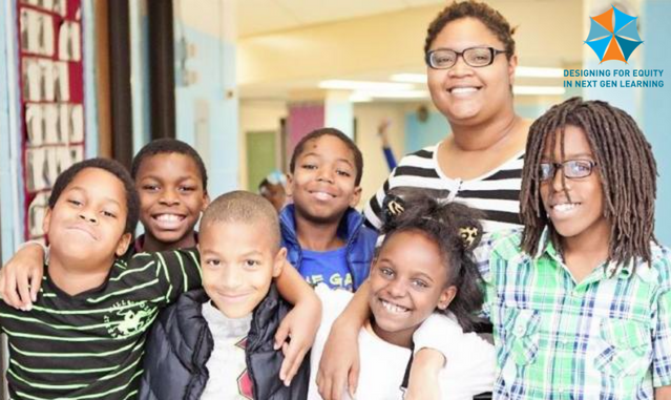
In these times of deep division and trauma, our nation’s youth are leading us forward to healing and equity in K-12 schools, if only we listen, tap into their strengths, and respond to their needs.

What Are Student Voice Strategies?
Student voice strategies center the voices of those most closely affected by educational inequities—the students themselves. Successful youth-adult partnerships share power in decision-making to create more equitable learning experiences and outcomes for learners.
These strategies are grounded in Liberatory Transformation Design, an inclusive, iterative, and imaginative approach that school communities have successfully used to implement change. School communities can use Liberatory Transformation Design mindsets, practices, and tools to amplify the voices of students when making decisions about teaching and learning, school environments, policy, and public discourse about education, racial equity, and social justice.
Some example strategies that center student voice in school decision-making and learning redesign for equity include student adult advisory boards, empathy interviews, learning walks, and "voices of learning" installations.

Tools for Student Voice
- Tamarack Institute’s Index of Community Engagement Techniques, Tamarack Institute
- Student Led Conference Model Agenda, High Tech High
- 64 Ways to Amplify Youth Voice and Agency through Partnership, UP for Learning
- Transforming Power through Youth-Adult Partnerships, NGLC
- Invite & Empower Stakeholders and Engage Every Stakeholder Guides, NGLC
- Seed to Tree, UP for Learning
- Youth-Adult Co-Design Partnerships, National Equity Project
- What Is Youth-Adult Partnership, National Council for Mental Wellbeing
- Youth-Adult Partnership Rubric, UP for Learning
- Youth-Adult Partnership for Student-Centered Evidence, NGLC
 Use Student Voice: Guiding Questions
Use Student Voice: Guiding Questions
What strategies has our school/district used to surface and understand the passions, concerns, and input of students and families, specifically those who have been marginalized or not well-served in the past?
In what ways might systemic inequities shape how formal and informal decision-making power, authority, and influence are distributed across our school/district community?
What strategies provide students from historically marginalized and excluded communities with true agency to create change in our school/district community?
 Considerations for School Leaders
Considerations for School Leaders
- Look for examples of decisions made in your schools that elevated the voices of students. What circumstances helped shift traditional power dynamics and empowered students to contribute equitable to the decision-making process? What happened after the decision was made?
- Examine your own leadership practices. Look for more opportunities to cede power, listen more, and create the conditions for students from historically marginalized and excluded communities to lead. The next time a decision needs to be made that will have an impact on the students in your school, try something new. Be prepared that it will take more time to reach a decision and the decision might be different than you envisioned, but follow through to see the results play out and ask for feedback as you reflect on what worked and how to improve.
